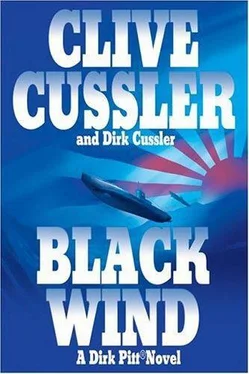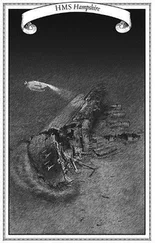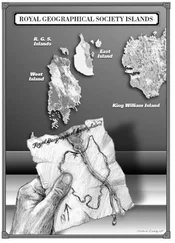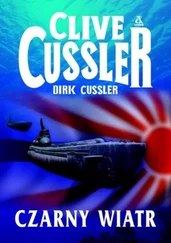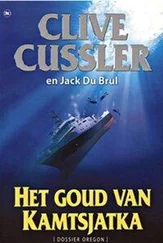“Good morning, gentlemen,” the three-dimensional image murmured.
“Hi, Max. You remember the younger Dirk Pitt?”
“Of course. Nice to see you again, Dirk.”
“You're looking good, Max.”
“I'd look better if Hiram would stop dressing me in Britney Spears outfits,” she replied with disdain, rolling her hands down her body.
“All right. Tomorrow it will be Prada,” Yaeger promised.
“Thank you.”
“Dirk, what is it that you'd like to ask Max?” Yaeger prompted.
“Max, what can you tell me about the Japanese efforts at chemical and biological warfare during World War Two?” Dirk asked, turning serious.
Max hesitated for a moment as the question generated a massive search through thousands of databases. Not just limiting it to oceanographic resources, Yaeger had wired the NUMA network into a diverse multitude of government and public information resources, ranging from the Library of Congress to the Securities and Exchange Commission. Sifting through the mass of information, Max consolidated the data points into a concisely summarized reply.
“The Japanese military conducted extensive research and experimentation into chemical and biological weaponry both during and preceding World War Two. Primary research and deployment occurred in Manchuria, under the direction of the occupying Japanese Imperial Army after they had seized control of northeast China in 1931. Numerous facilities were constructed throughout the region as test centers, under the guise of lumber mills or other false fronts. Inside the facilities, Chinese captives were subject to a wide variety of human experiments with germ and chemical compounds. The Qiqihar facility, under the command of Army Unit 516, was the largest Japanese chemical weapons research and test site, although chemical weapons manufacture actually took place on the Japanese mainland. Changchun, under Army Unit 100, and the sprawling Ping Fan facility, under \my Unit 731, were the major biological warfare research and test centers. The facilities were in fact large prisons, where local criminals and derelicts were sent and used as test subjects, though few of the captives would survive their incarceration.”
“I've read about Unit 731,” Dirk commented. “Some of their experiments made the Nazis look like Boy Scouts.”
“Allegations of inhuman experiments performed by the Japanese, particularly in Unit 731, are nearly endless. Chinese prisoners, and even some Allied prisoners of war, were routinely injected with an assortment of deadly pathogens, as their captors sought to determine the appropriate lethal dosage. Biological bombs were dropped on prisoners staked to the ground in order to test delivery systems. Many experiments took place outside the walls of the facilities. Typhoid bacilli germs were intentionally released into local village wells, resulting in widespread outbreaks of fever and death. Rats carrying plague-infected fleas were released in congested urban areas as a test of the speed and ferocity of infection. Children were even considered an acceptable target. In one experiment, local village children were given chocolates filled with anthrax, which they gratefully devoured, with horrifying side effects.”
“That's revolting,” Yaeger said, shaking his head. “I hope the perpetrators paid for their crimes.”
“For the most part, they did not,” Max continued. “Nearly to a man, those in charge of the chemical and biological army units avoided prosecution as war criminals. The Japanese destroyed much of the documentation, and the camps themselves, before their surrender. American intelligence forces, unaware of the extent of horrors, or, in some cases, seeking to obtain the results of the ghastly experiments, looked the other way at the atrocities. Many of the Imperial Army medical professionals who worked in the death camps went on to become respected business leaders in Japan's postwar pharmaceutical industry.”
“With blood on their hands,” Dirk muttered.
“No one knows for sure, but experts estimate that at least two hundred thousand Chinese died as a result of Japanese chemical and biological warfare activity during the thirties and forties. A large percentage of the casualties were innocent civilians. It was a wartime tragedy that has only recently received much attention from historians and scholars.”
“Man's inhumanity to man never ceases to amaze,” Yaeger said solemnly.
“Max, exactly what pathogens and chemicals did the Japanese work with?” Dirk asked.
“It might be easier to ask which agents they didn't experiment with. Their known research in bacteria and viruses ranged from anthrax, cholera, and bubonic plague to glanders, smallpox, and typhus, with experiments conducted in pretty much everything else in between. Among the chemical agents employed in weaponry were phosgene, hydrogen cyanide, sulfur mustard, and lewisite. It is unknown how much was actually deployed in the field, again due to the fact that the Japanese destroyed most of their records as they retreated from China at the end of the war.”
“How would these agents have been used on the battlefield?”
“Chemical agents, possessing a long shelf life, are perfectly suitable for munitions. The Japanese manufactured a large quantity of chemical munitions, mostly in the form of grenades, mortars, and a wide range of artillery shells. Thousands of these weapons were even left behind in Manchuria at the war's end. The Japanese biological delivery systems were less successful due to the sensitive nature of the arming agents. Development of a practical biological artillery shell proved difficult, so much of the Japanese effort at fabricating the release of biological agents was focused on aerial bombs. Known records seem to indicate that the Japanese scientists were never completely satisfied with the effectiveness of the bio bombs they developed.”
“Max, are you aware of the use of porcelain as a bomb-casing material for these chemical or biological agents?”
“Why, yes, as a matter of fact. Steel bombs generated excessive heat upon explosion that would destroy the biological pathogens, so the Japanese turned to ceramics. It is known that a variety of porcelain bomb canisters were tested in China as aerial delivery systems for the biological agents.”
Dirk felt a lump in his stomach. The I-403 had indeed been on a mission of death with its biological bombs back in 1945. Fortuitously, the submarine had been sunk, but was that, in fact, the last of its failed mission?
Yaeger broke his concentration. “Max, this is all new history to me. I had no idea the Japanese actually used chemical and biological weapons in battle. Were they ever employed outside of China, against American forces?”
“The Japanese deployment of chemical and biological weapons was primarily restricted to the Chinese theater of war. Limited instances of their usage were also reported in Burma, Thailand, and Malaysia. My data sources show no recorded use of biochemical agents in battle with Western Allied forces, perhaps due to Japanese fear of reprisal. It is suspected that chemical weapons would have been employed in defense of the homeland, had an invasion of Japan been necessary. Of course, your father's discovery proves that chemical munitions were to be stockpiled in the Philippines for possible deployment in defense of the islands.”
“My father's discovery?” Dirk asked. “I don't understand.”
“I'm sorry, Dirk, let me explain. I received a toxin assessment from the Mariana Explorer taken from an ordnance sample recovered by | your father and Al Giordino.”
“You've completed your database search on the arsenic sample already? I thought you said you wouldn't have that completed until after lunch,” Yaeger asked the hologram.
Читать дальше
